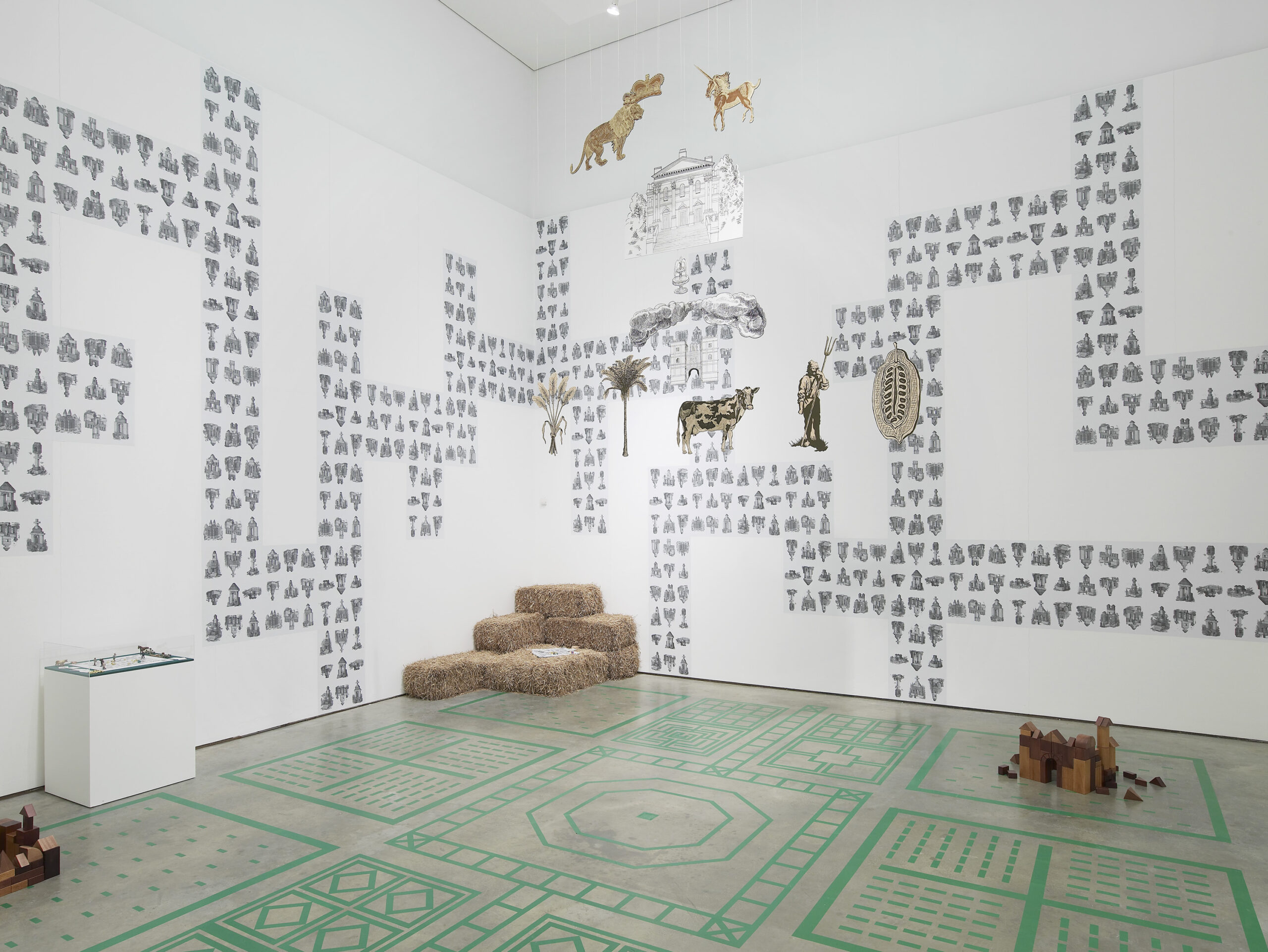
Södertälje konsthall
Portal
2021
Social Construction
By Olivia Plender,
Social Construction
By Olivia Plender,
Social Construction
By Olivia Plender,
Social Construction
By Olivia Plender,
Social Construction
By Olivia Plender,
Social Construction
By Olivia Plender,
Social Construction
By Olivia Plender,
2021
Social Construction
By Olivia Plender,

12/03 – 15/05, 2021
Olivia Plender is a British artist based in Stockholm. Drawing on social history, in her artworks she often explores different educational models. Her work looks at opposing ideas about the purpose of education which emerged in the industrial and post-industrial eras – training for the workplace versus education as an emancipatory practice. At Södertälje konsthall Olivia Plender presents two works that relate to the theme of childhood, based on her research into the history of educational toys and games.
Social Construction (2012) comprises an architectural toy set and posters, which invite visitors to assemble 31 different institutional structures from wooden blocks. This work is based on the Anchor Stone Blocks, a popular learning game patented by Friedrich Richter in 1884. The game owes its logic to a system developed by Friedrich Fröbel, the German nineteenth-century educational reformer and inventor of the kindergarten. He advocated ‘free play’ in childhood and to this end made a series of toys that he named ‘gifts’. They were meant to encourage different stages of a child’s development, while being open enough in form to engage their creativity. Unlike Fröbel’s version of the blocks (the sixth ‘gift’), Social Construction is a ‘closed’ game, which educates players about the institutional structures that make up mainstream society. A limited number of building options are presented in the posters, including the church, the school, the military academy, and even a cultural institution.
Easton Fables (2016) is a book for children, which was originally commissioned as part of an unrealised public art project, intended for a primary school in the British city of Bristol. It is presented publicly for the first time in this exhibition. The Easton Fables are a collection of short stories and games, written in collaboration with a group of eight-year-old children from the school. Together, the artist and children used string in order to learn how to play the ancient game of Cat’s Cradle and wrote the fables, based on the shapes and figures that they made. The games create an accessible but abstract platform to inspire storytelling, using these deceptively simple structures to draw on the children’s own experiences of such difficult topics as war and migration, as well as everyday life in a school. In the stories we see how children express fundamental needs such as safety, peace and happiness in a complex, confusing and often threatening adult world.